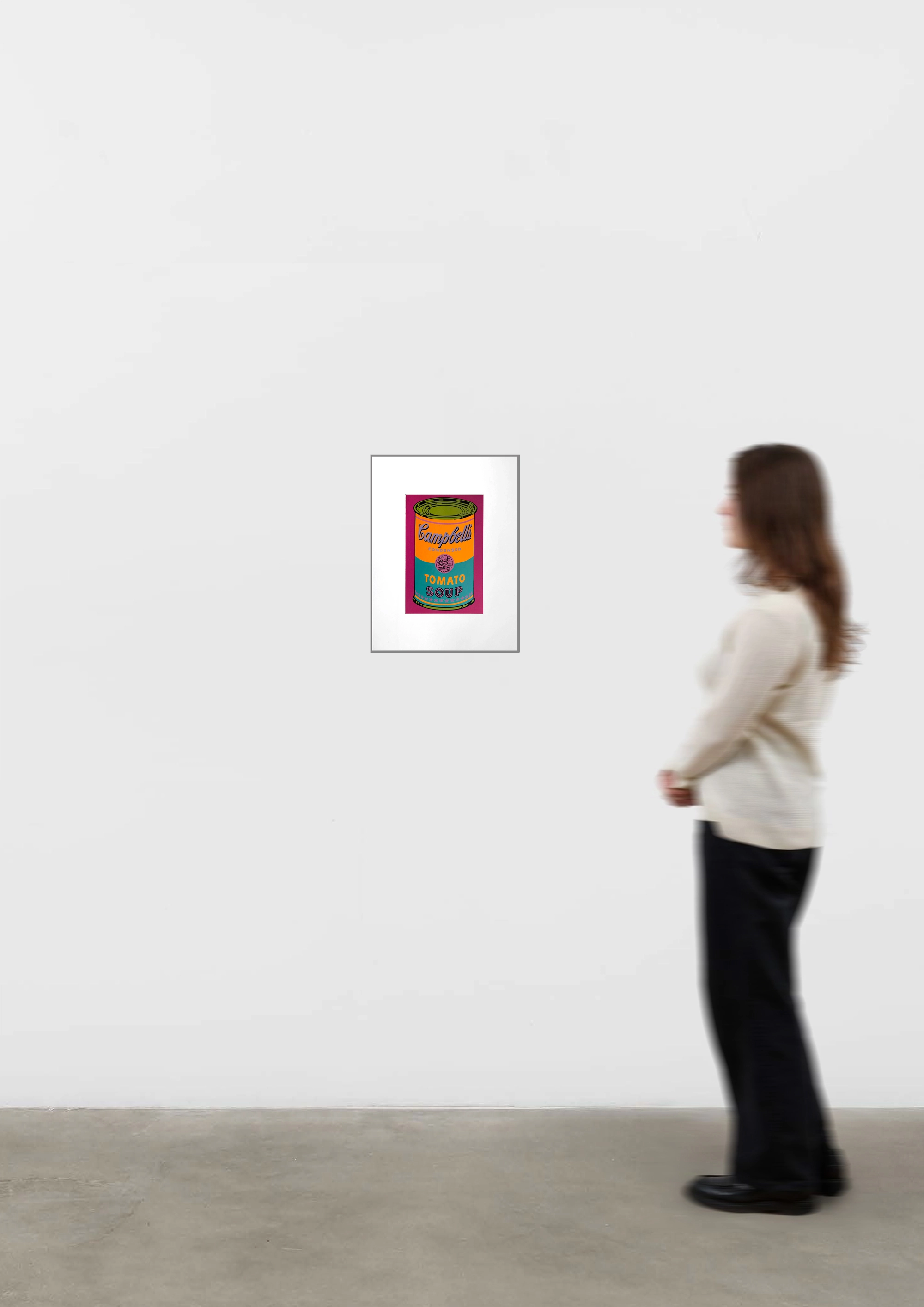Andy Warhol
Campbell's Tomato Soup Can, 1968
color screenprint on paper
paper: 15 1/4 x 14 7/8 inches
image: 15 1/4 x 10 inches
frame: 25 1/2 x 21 1/2 inches
edition of unknown size
(estimated at fewer than 300)
unsigned as published
stamped verso "screenprint from Banner by Andy Warhol © for Multiples Inc. 1968"
printed by Edition Domberger, Germany
published by Multiples, Inc., New York
Provenance
Multiples Inc., New York
Private Collection, New York
Literature
Frayda Feldman and Jorg Schellmann, Andy Warhol Prints: A Catalogue Raisonne: 1962-1987, Fourth Edition, D.A.P., New York, 2003, see Catalogue Reference F&S II. 44-53, page 213 regarding Campbell's Tomato Soup Banner. Warhol also created this image as a colored felt banner, in 1965, co-published by the Betsy Ross Flag and Banner Co., Inc. and Multiples, Inc., New York
paper: 15 1/4 x 14 7/8 inches
image: 15 1/4 x 10 inches
frame: 25 1/2 x 21 1/2 inches
edition of unknown size
(estimated at fewer than 300)
unsigned as published
stamped verso "screenprint from Banner by Andy Warhol © for Multiples Inc. 1968"
printed by Edition Domberger, Germany
published by Multiples, Inc., New York
Provenance
Multiples Inc., New York
Private Collection, New York
Literature
Frayda Feldman and Jorg Schellmann, Andy Warhol Prints: A Catalogue Raisonne: 1962-1987, Fourth Edition, D.A.P., New York, 2003, see Catalogue Reference F&S II. 44-53, page 213 regarding Campbell's Tomato Soup Banner. Warhol also created this image as a colored felt banner, in 1965, co-published by the Betsy Ross Flag and Banner Co., Inc. and Multiples, Inc., New York





